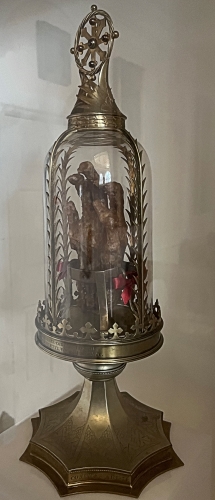Verona was a lovely destination for the first (non-Alpine) half of our holiday this year - with plenty to see (between aperitifs 😂).
The map below shows the city in 1668, with walls (still standing) adapted to defend against artillery. This book was displayed in the Cathedral 'Chapter Library' - which claims to be the oldest library still in existence.
The map shows the Castelvecchio, built in the 14th century and now an art gallery. The beautiful bridge had to be reconstructed in the post-war period as all the river crossings in the city were destroyed by retreating German forces in WWII (the castle was also largely gutted by Allied bombing) - conflict shapes so much of contemporary Europe.
We spent many 'long lunches' in the Piazza delle Erbe in the centre of the city. It was the main market place and one of the buildings in the square, 'La Berlina', has a set of measurement standards for traders - a ring to check bundles of wood and incised measures in the stonework for tiles and bricks.
One additional 'A223 feature' in the square were the remaining buildings of the original Jewish Ghetto in Verona. As in Venice (and I presume other cities) the constraint on Jews to live in a prescribed area, with no room to expand horizontally, led to distinctive 'high rise' buildings - like the seven story towers you can see below.
As a marker of more modern tensions the nearby synagogue was under the watchful eye of heavily armed private security guards.
